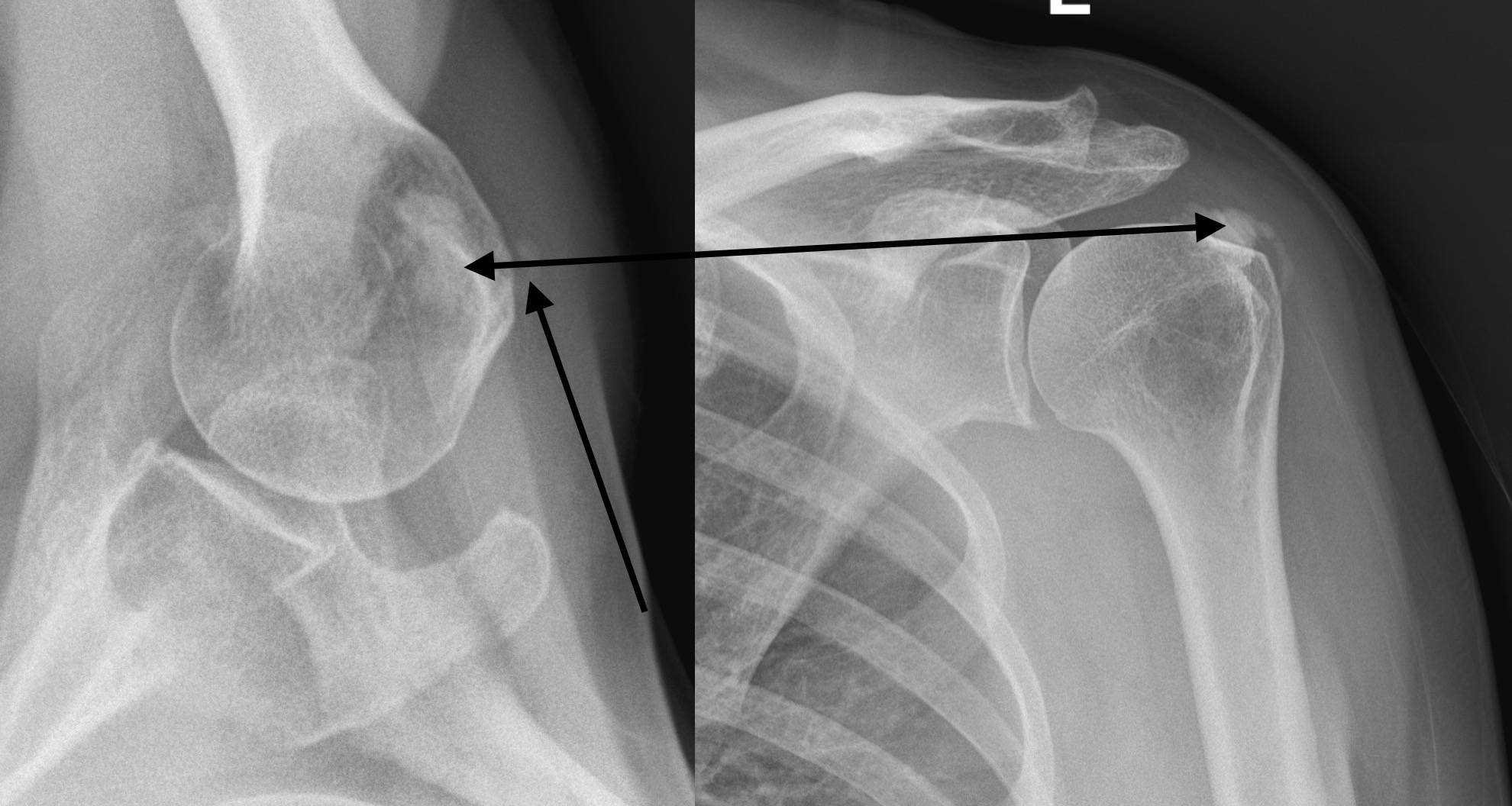Calcific Tendonitis
It is one of the commonest causes of shoulder pain especially where it occurs at night or starts suddenly.

Calcific tendonitis is a condition that causes the formation of a small, usually about 1-2 centimetre size, calcium deposit within the tendons of the rotator cuff. These deposits are usually found in patients at least 30-40 years old and have a higher incidence in diabetics. The calcium deposits are not always painful, and even when painful they will often spontaneously resolve after a period of one to four weeks.
What causes calcific tendinitis?The cause of calcium deposits within the rotator cuff tendon (calcific tendonitis) is not entirely understood. Different ideas have been suggested, including blood supply and ageing of the tendon, but the evidence to support these conclusions is not clear.
One of the most compelling arguments is delayed healing.
Normally, the tendon heals via the action of collagen forming cells known as fibroblasts. After a period of weeks or months, the fibroblasts become less numerous in the region and are replaced by osteoblasts (bone forming cells). These osteoblasts stimulate the growth of bone (calcium) in the tendon.
Hence delay in healing can lead to calcific deposits.
How Does Calcific Tendonitis Progress?
It progresses according to stage and type.
- Type of Calcium
- Calcium Sulphate commonest
- Calcium hydroxyapatite Usually has the best outcome
- Calcium Pyrophoshphate Resistent
- Stage of Disease
Pre-Calcification Stage
You usually do not have any symptoms at this stage. At this point in time, the site where the calcification tends to develop undergo cellular changes that predispose the tissues to develop calcium deposits.
Calcific Stage
During this stage, the calcium is excreted from cells and then coalesces into calcium deposits. When seen, the calcium looks chalky, it is not a solid piece of bone. Once the calcification has formed, a so-called resting phase begins, this is not a painful period and may last a varied length of time. After the resting phase, a resorptive phase begins--this is the most painful phase of calcific tendonitis. During this resorptive phase, the calcium deposit looks something like toothpaste.
Post-Calcific Stage
This is usually a painless stage as the calcium deposit disappears and is replaced by more normal appearing rotator cuff tendon.
Rotator Cuff Calcific Tendonitis Treatment
A plain Xray in two planes is the best to diagnose the stage and site of disease
- Rest
- NSAID’s
- Ultrasound or Xray guide Barbatouge where we can suck the calcium out
- Surgical release with Keyhole surgery
- Therapy

Researchers have concluded that there are essentially 7 stages that need to be covered to effectively rehabilitate these injuries and prevent recurrence – these are:
- Early Injury Protection: Pain Relief & Anti-inflammatory Tips
- Regain Full Range of Motion
- Restore Scapular Control
- Restore Normal Neck-Scapulo-Thoracic-Shoulder Function
- Restore Rotator Cuff Strength
- Restore High Speed, Power, Proprioception & Agility
- Return to Sport or Work
Results of Treatment
They are usually satisfactory to excellent but depend upon underlying cause and recurrence is always a possibility.
